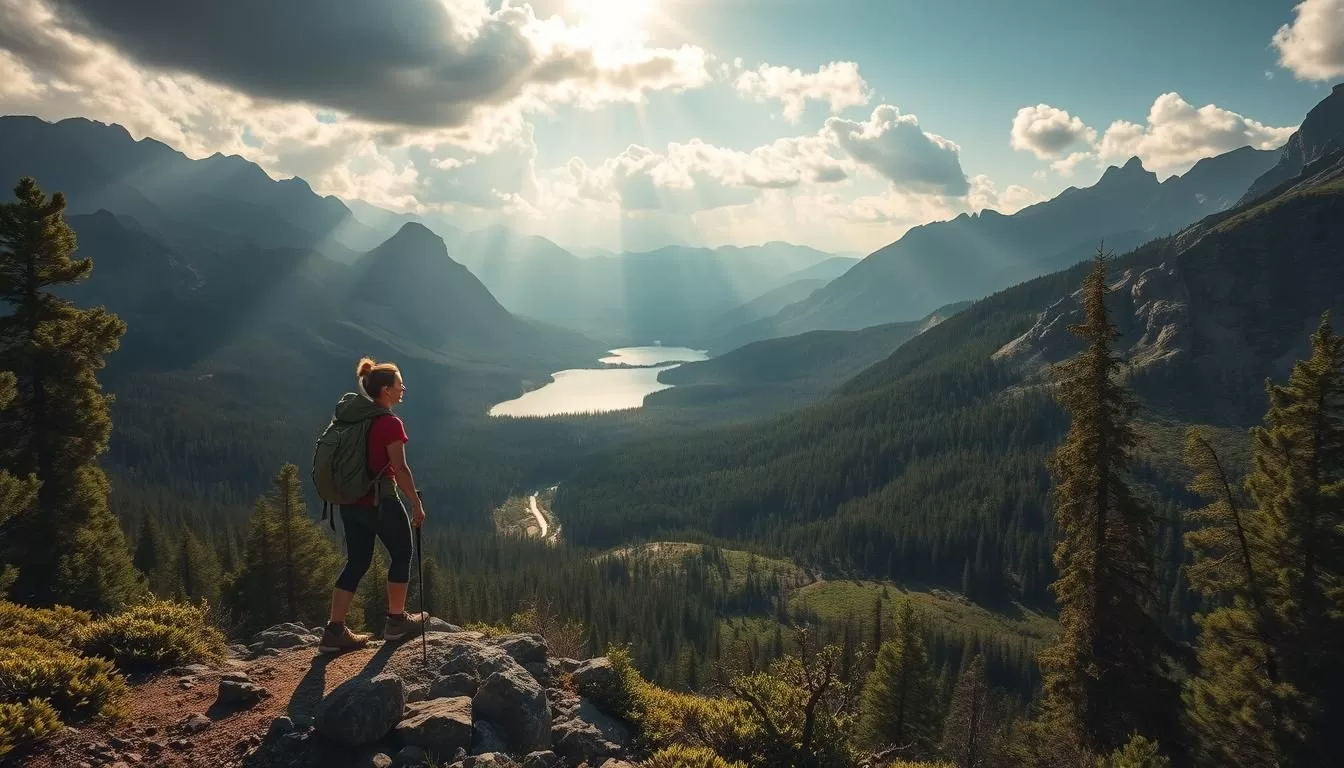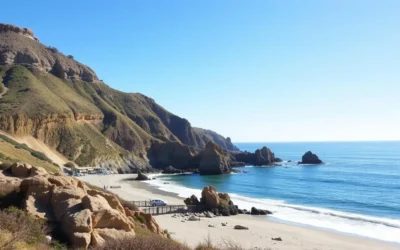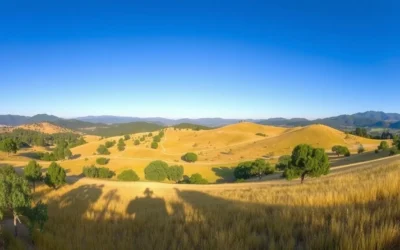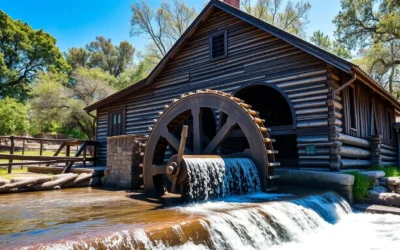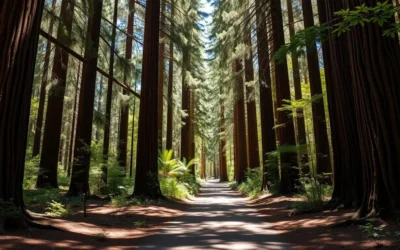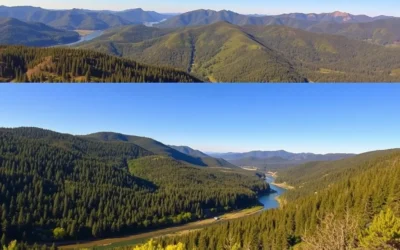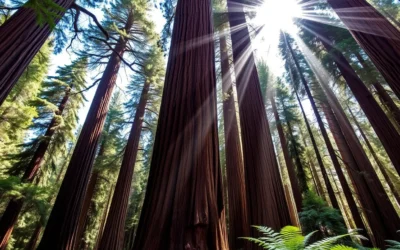✓ Accommodations✓ Flights✓ Rental Cars
Imagine standing atop Angel’s Landing in a national park, surrounded by breathtaking landscapes. Over four weeks, I visited eight US national parks, experiencing the diverse natural beauty of the country. From the towering sequoias of California to the dramatic canyons of Utah, each park offered a unique adventure.
This comprehensive guide will take you on a journey through America’s most breathtaking parks. You’ll discover the top activities to experience in each national park, making the most of your time and creating unforgettable memories on your next trip. Whether you’re planning a dedicated national park road trip or adding a park visit to your vacation, this guide will help you plan your experience over several days.
Discovering America’s Natural Treasures
America’s national parks are a treasure trove of natural wonders, offering experiences that range from the majestic to the serene. As you plan your trip to these incredible destinations, understanding the best times to visit can enhance your experience.
Why National Parks Should Be on Your Bucket List
Each national park in the U.S. offers a unique set of experiences, from hiking and wildlife viewing to scenic drives and educational programs. Visiting a national park is not just about seeing natural beauty; it’s about immersing yourself in the history, geology, and biodiversity of the area.
The diversity of the parks ensures that there’s something for everyone. Whether you’re interested in the geothermal wonders of Yellowstone or the majestic granite cliffs of Yosemite, the national parks provide a backdrop for creating lifelong memories.
Best Seasons to Visit National Parks
The time you choose to visit a national park can significantly impact your experience. The summer months (June-August) are peak season, with warm weather and full access to park facilities. However, this period also attracts the largest crowds and higher prices for accommodations and tours.
- Summer offers full access to most parks but comes with larger crowds.
- Fall (September-October) provides spectacular foliage and fewer visitors.
- Spring (April-May) brings wildflower blooms and wildlife activity.
- Winter transforms some parks into magical landscapes, though many facilities close.
Considering a visit during the shoulder seasons can provide a better balance between comfortable weather and manageable crowd levels. Planning your trip midweek can also help you avoid the heaviest crowds, regardless of the season.
| Season | Characteristics | Best For |
|---|---|---|
| Summer | Warm weather, full access to facilities | Families, those who prefer warmer weather |
| Fall | Specacular foliage, fewer crowds | Photographers, those who prefer cooler weather |
| Spring | Wildflower blooms, wildlife activity | Nature lovers, photographers |
| Winter | Magical landscapes, serene environments | Those who enjoy winter sports, serene landscapes |
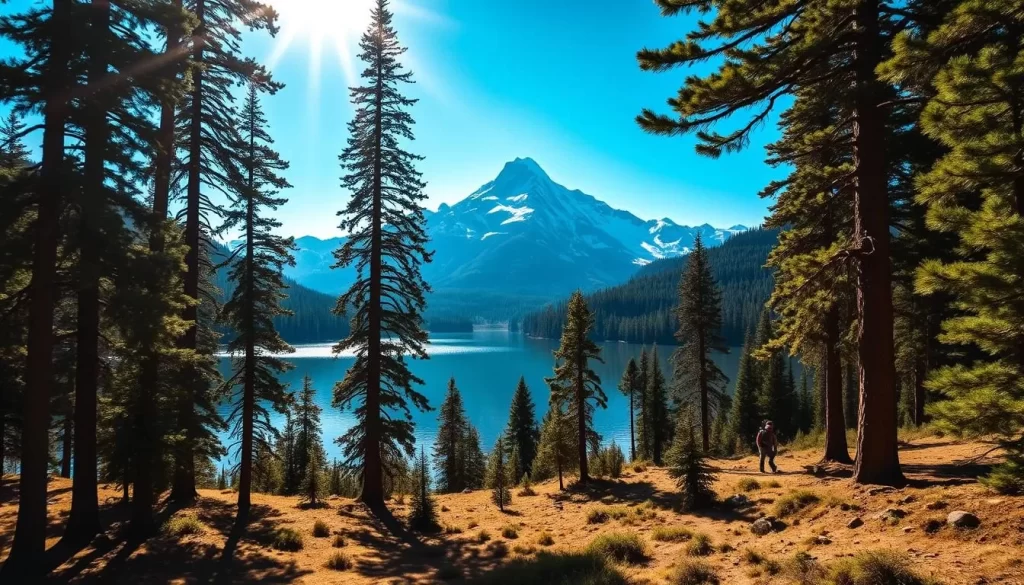
When planning your visit, consider the days you travel. The later in the summer you go, the less crowded the parks tend to be. For example, August is still a busy time, but crowd levels are generally more manageable than in July.
Yellowstone National Park: America’s First National Park
Yellowstone National Park, the original national park, offers an unparalleled experience with its vast array of geothermal features and diverse wildlife. As you step into this magnificent park, you’re stepping into a world of natural wonders that have been preserved for generations.
Established in 1872, Yellowstone was the first national park in the world, setting a precedent for conservation efforts globally. The park’s sheer size and diversity make it a unique destination, featuring colorful hot springs, geysers, and an array of wildlife including herds of bison and elk.
Geysers and Hot Springs: Old Faithful and Beyond
One of the park’s most iconic features is the geysers and hot springs. Old Faithful, a geyser known for its regular eruptions, is a must-see. The geyser’s eruptions are a display of geothermal energy that has fascinated visitors for decades.
Besides Old Faithful, the park is home to numerous other geysers and hot springs, each with its unique characteristics. The Grand Prismatic Spring, for example, is known for its vibrant colors, created by the presence of microorganisms.
Wildlife Viewing in Lamar and Hayden Valleys
The Lamar and Hayden Valleys are renowned for their wildlife viewing opportunities. These areas are home to a wide range of wildlife, including bison, elk, and bears. The valleys provide a natural habitat for these animals, making them ideal spots for observation.
Visitors can enjoy guided tours or self-guided exploration to witness these animals in their natural habitat. The experience is both thrilling and educational, offering insights into the behavior and habitat of the wildlife.
Grand Canyon of the Yellowstone
The Grand Canyon of the Yellowstone is another breathtaking feature of the park. The canyon stretches for 20 miles and reaches depths of up to 1,200 feet, showcasing dramatic yellow, orange, and pink-hued walls.
The canyon is not just a visual marvel; it also features two magnificent waterfalls: the 109-foot Upper Falls and the 308-foot Lower Falls. The Artist Point on the South Rim provides one of the most iconic views in the park, framing the Lower Falls with the colorful canyon walls.
Yosemite National Park: Iconic Granite Wonders
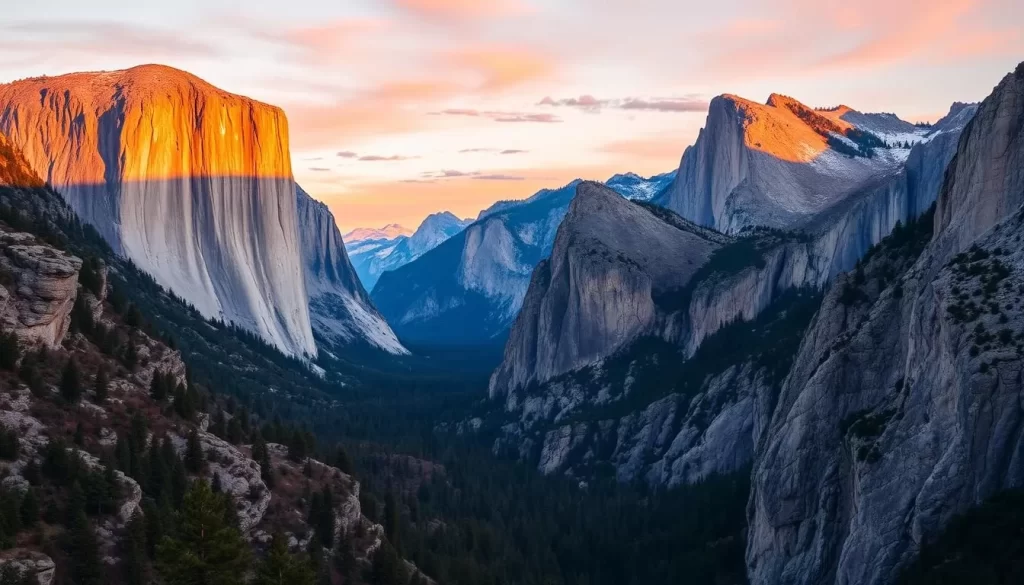
With its iconic granite formations, Yosemite National Park offers some of the most spectacular hiking experiences in the United States. As you explore the park, you’ll encounter diverse landscapes, from lush valleys to towering cliffs.
Hiking to Yosemite Falls
Hiking to Yosemite Falls is a must-do experience. The Upper Yosemite Falls Trail takes you on a challenging but rewarding journey to the top of the falls. You’ll be surrounded by granite cliffs and enjoy breathtaking views of the valley below.
The trail is approximately 4.8 miles round trip, with a steep incline. However, the roar of the falls and the sight of the water cascading down make the effort worthwhile.
Half Dome: The Ultimate Challenge
For experienced hikers, the Half Dome trail is an unparalleled adventure. This 17-mile round-trip hike is challenging, with a steep ascent using cables on the last stretch. The panoramic views from the top are unmatched, making it a truly once-in-a-lifetime experience.
Valley Views and Photography Spots
Yosemite Valley offers numerous photography spots. Tunnel View provides a classic vista of El Capitan, Half Dome, and Bridalveil Fall. Glacier Point offers elevated views of the valley and the High Sierra. For the best photography results, visit during early morning or late afternoon.
Other notable spots include Valley View along Northside Drive, Sentinel Bridge, and Cook’s Meadow. Each location offers unique perspectives on the park’s iconic landmarks.
Grand Canyon National Park: Nature’s Masterpiece
![]()
As you step into Grand Canyon National Park, the vast expanse of the canyon unfolds before your eyes. The Grand Canyon is a masterpiece of nature, with its immense scale and breathtaking beauty promising an adventure like no other.
South Rim Experiences
The South Rim of the Grand Canyon is the most accessible part of the park, offering a variety of experiences for visitors. Biking along the South Rim is an efficient and enjoyable way to experience multiple viewpoints without dealing with parking or shuttle buses.
The Hermit Road Greenway Trail provides a scenic 7-mile route (one way) with minimal vehicle traffic and numerous canyon overlooks. This trail is ideal for those looking to take in the sights at their own pace.
Biking and Hiking Adventures
For those seeking adventure, the Grand Canyon offers several hiking trails. The Bright Angel Trail offers a well-maintained path with shade, rest houses, and water stations (seasonal). For a more direct route into the canyon, the South Kaibab Trail provides spectacular open views, but be aware that there is no shade or water source along this trail.
Day hikers should consider turning around at the 1.5-mile Resthouse on Bright Angel or Cedar Ridge on South Kaibab to avoid the dangers of hiking out of the canyon in the afternoon heat. For a true canyon adventure, consider a multi-day backpacking trip to Phantom Ranch or Bright Angel Campground at the bottom of the canyon (permits required).
Zion National Park: Red Rock Wilderness
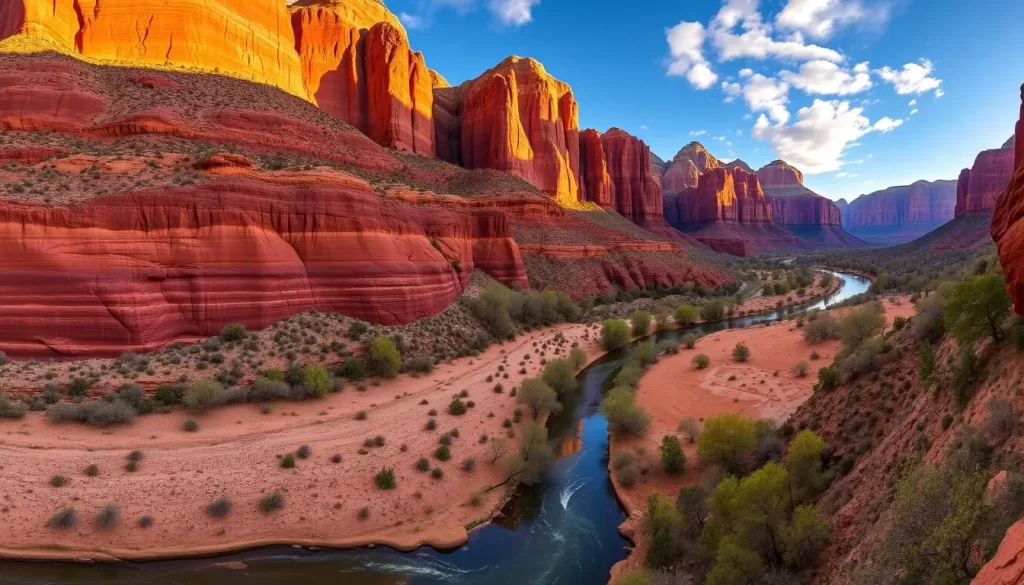
As you step into Zion National Park, you’re surrounded by the awe-inspiring beauty of red rock formations. The park’s unique landscape, shaped by millions of years of geological activity, offers a diverse range of experiences for visitors.
Angel’s Landing: A Thrilling Hike
For the more adventurous, Angel’s Landing is a challenging hike that rewards with breathtaking views. This thrilling adventure is not for the faint of heart, as it involves navigating steep drop-offs and narrow ridges. However, the sense of accomplishment and the panoramic views from the top make it an adventure worth undertaking.
The hike to Angel’s Landing is a 5-mile round-trip journey that starts from the Grotto Trailhead. The trail is strenuous, with a steep incline in some areas, but the scenery along the way is stunning.
Exploring the Canyon Floor
For those looking to explore the park at a more leisurely pace, the canyon floor offers several accessible trails. The Riverside Walk is a 2.2-mile round-trip paved trail that follows the Virgin River to the entrance of the Narrows. This trail is perfect for families and those with mobility challenges.
The national park also offers the Pa’rus Trail, a paved route along the Virgin River that provides beautiful canyon views. Wildlife viewing opportunities abound on the canyon floor, with mule deer, wild turkeys, and numerous bird species thriving in the riparian environment.
Glacier National Park: Crown of the Continent
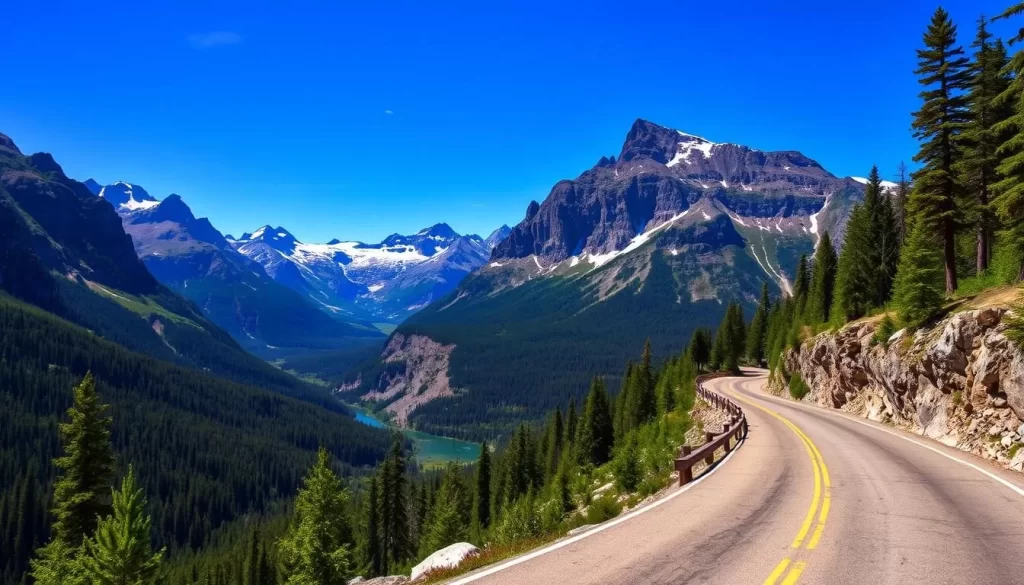
With its unique blend of mountainous terrain and alpine lakes, Glacier National Park is a nature lover’s paradise. As you explore this national park, you’ll be surrounded by breathtaking mountain vistas and diverse wildlife.
Driving the Going-to-the-Sun Road
The Going-to-the-Sun Road is a scenic drive that traverses the park, offering stunning views of the surrounding mountain landscapes. This 50-mile road is a masterpiece of engineering, with numerous turnouts and parking areas where you can stop to take in the views or hike to nearby trails.
As you drive, you’ll pass through different ecosystems, from lush forests to alpine meadows. Be sure to stop at the many viewpoints and take a moment to appreciate the beauty of this national park.
Hiking to Hidden Lake and Grinnell Glacier
For those who love to hike, Glacier National Park offers many trails with varying levels of difficulty. The Hidden Lake Overlook Trail is a moderate 2.7-mile round-trip trail that begins at Logan Pass Visitor Center and traverses alpine meadows often filled with wildflowers and frequented by mountain goats and bighorn sheep.
The Grinnell Glacier Trail is another popular option, offering a 7.6-mile round-trip hike that passes by crystal-clear lakes before climbing to views of the rapidly receding Grinnell Glacier. Both trails provide excellent wildlife viewing opportunities, making this national park a must-visit destination.
Whether you choose to drive the Going-to-the-Sun Road or hike to one of the many scenic trails, Glacier National park is sure to leave you in awe of its natural beauty.
Grand Teton National Park: Majestic Mountain Landscapes
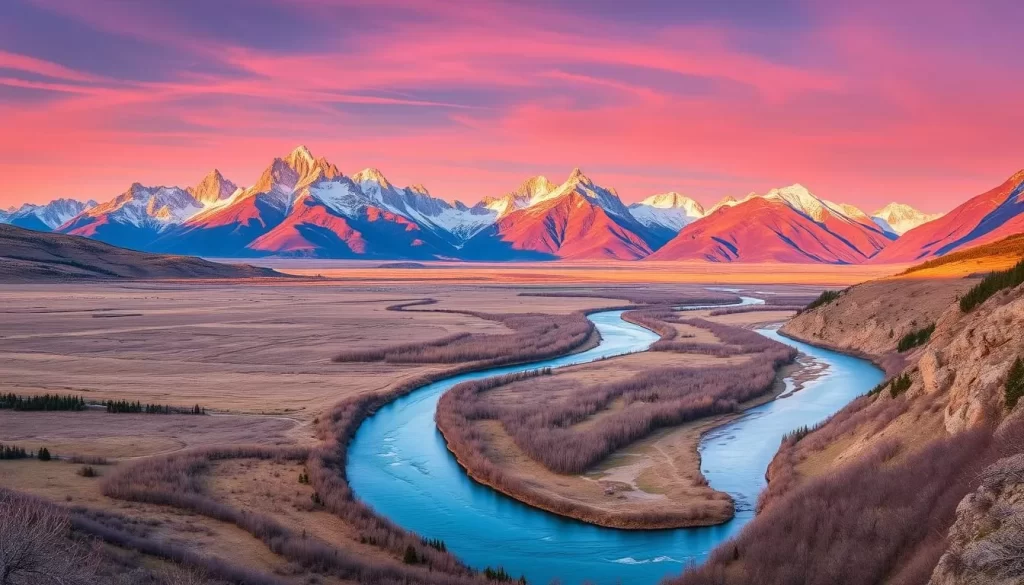
With its majestic mountain landscapes, Grand Teton National Park offers some of the most breathtaking views in the United States. The park’s diverse landscapes, including jagged mountain peaks, lush meadows, and scenic lakes, make it a haven for outdoor enthusiasts and photographers.
Jenny Lake and Inspiration Point
Jenny Lake is a highlight of Grand Teton National Park, offering stunning reflections of the Teton Range. A hike to Inspiration Point provides a panoramic view of the lake and surrounding mountains.
The trail around Jenny Lake is a popular hike, with the option to take a shuttle boat to reduce hiking distance. The area is known for its mountain vistas and serene atmosphere.
Photography at Mormon Row and Schwabacher Landing
Grand Teton National Park is renowned for its photography opportunities. Mormon Row Historic District, with its iconic Moulton Barns, is a prime spot for capturing the sunrise and the Teton Range.
Schwabacher Landing provides access to beaver ponds along the Snake River, creating perfect reflections of the Teton Range, especially at sunrise. Oxbow Bend and Snake River Overlook are other notable photography locations.
Bryce Canyon National Park: Otherworldly Hoodoos
Located in southern Utah, Bryce Canyon National Park is a place of breathtaking natural beauty. This national park is known for its distinctive hoodoos, which are a marvel of erosion and geological history.

Navajo Loop and Fairyland Loop Trails
The park offers several trails that allow you to explore the hoodoos up close. The Navajo Loop and Fairyland Loop Trails are two of the most popular, offering a strenuous 6.4-mile day hike known as the Figure-8 Combination. This trail merges Queen’s Garden, the Navajo Loop, and the Peekaboo Loop into one challenging hike that takes you through a maze of rust-tinted sandstone formations.
As you meander through the trails, you’ll understand why Ebenezer Bryce called it “a hell of a place to lose a cow.” The experience is both humbling and exhilarating, surrounded by the natural world of hoodoos.
Sunrise and Sunset Viewing
The views at Bryce Canyon National Park are particularly spectacular during sunrise and sunset. At Sunrise Point, the first light illuminates the hoodoos, transforming them from shadowy silhouettes to glowing orange spires. Similarly, Sunset Point offers equally spectacular views as the day ends, with the setting sun casting long shadows between the hoodoos.
Bryce Point and Inspiration Point are other vantage points that offer panoramic views of the Bryce Amphitheater. The changing angle of sunlight throughout the day creates dramatically different appearances in the canyon, making multiple visits to the same viewpoints worthwhile.
Sequoia and Kings Canyon National Parks: Land of Giants
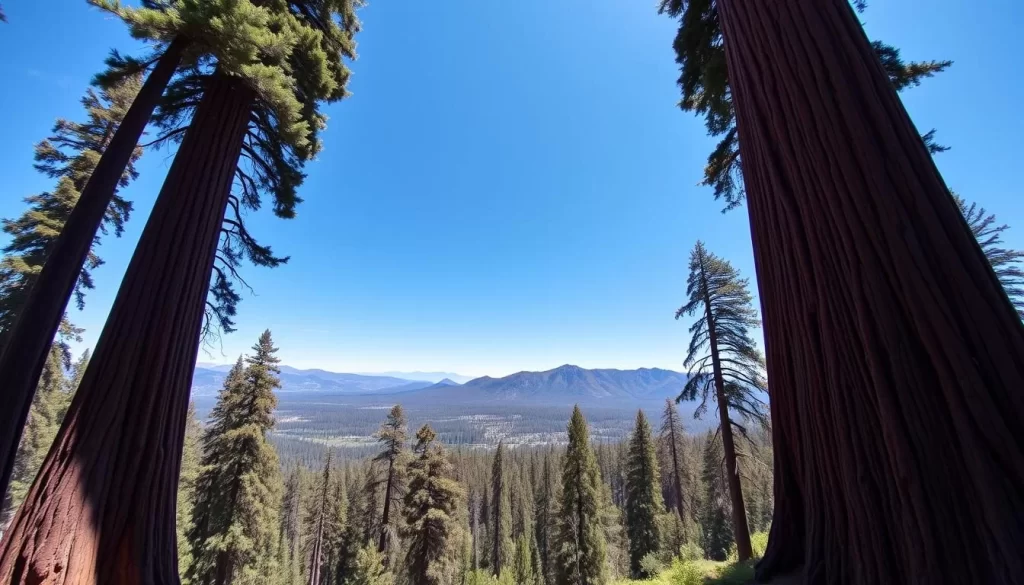
Sequoia and Kings Canyon National Parks are a haven for those seeking to experience the awe-inspiring presence of giant sequoia trees. As you explore these parks, you’ll be surrounded by the majesty of nature, with landscapes that are as diverse as they are breathtaking.
General Sherman and Grant Grove
The General Sherman tree, located in the Giant Forest, is the largest tree in the world by volume, standing as a testament to the enduring power of nature. Grant Grove, home to many giant sequoias, including the General Grant tree, is another must-visit destination. These trees are not just natural wonders; they are a reminder of the importance of conservation.
Scenic Drives and Meadow Walks
The parks offer several scenic drives, including the Generals Highway, which connects Sequoia and Kings Canyon National Parks, and the Kings Canyon Scenic Byway, which descends 4,000 feet to the canyon floor. You can also enjoy leisurely walks through meadows like Crescent Meadow and Zumwalt Meadow, surrounded by giant sequoias and other flora.
Activities include hiking the Big Trees Trail, a 1-mile loop around Round Meadow, and visiting Moro Rock for panoramic views of the Great Western Divide and San Joaquin Valley.
Mount Rainier National Park: Alpine Wildflower Paradise
As summer arrives, Mount Rainier National Park transforms into an alpine wildflower paradise. Early to mid-August is the best time to witness the vibrant blooms, with warm weather and clear skies making it ideal for hiking and exploration.
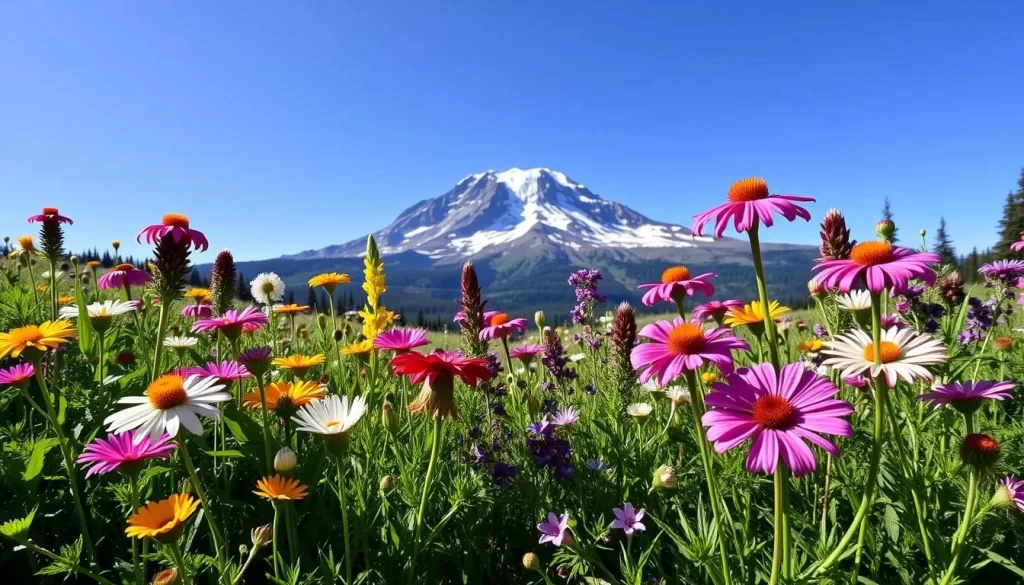
Skyline Trail and Paradise Area
The Paradise Area is a must-visit for any wildflower enthusiast. The Skyline Trail offers breathtaking views of the surrounding mountain landscape and is surrounded by a diverse array of wildflowers.
The Sourdough Ridge Trail provides a relatively easy 2.5-mile round-trip hike along an alpine ridge with 360-degree views of Mount Rainier and surrounding peaks.
Sunrise Area Explorations
At 6,400 feet, Sunrise is the highest point in the park accessible by vehicle, offering spectacular views of Mount Rainier. The Emmons Glacier, the largest glacier in the contiguous United States, is clearly visible on the mountain’s flank from Sunrise Point.
The Burroughs Mountain Trail takes hiking enthusiasts even closer to Mount Rainier, with options to hike to First, Second, or Third Burroughs for increasingly dramatic views.
National Parks, United States: Best Things to Do – Top Picks for Solo Travelers
For those traveling alone, the national parks offer a unique blend of solitude and adventure. As you explore these natural wonders, you’ll find numerous opportunities to engage with the environment, challenge yourself, and enjoy the tranquility of the great outdoors.
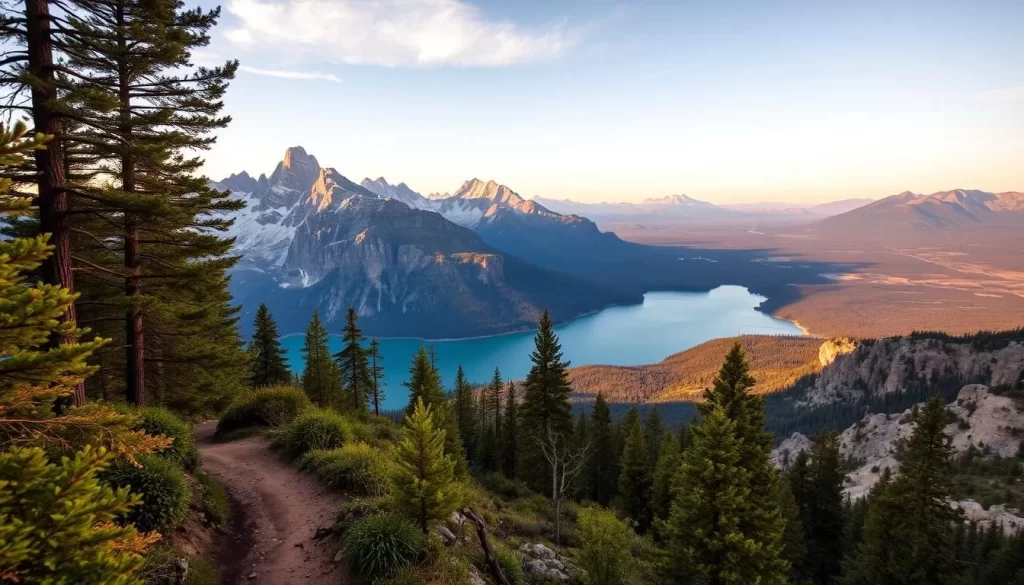
Safety Tips for Solo Park Adventures
When venturing into the national parks alone, safety should be your top priority. Make sure to inform someone about your itinerary and expected return time. Be prepared with the right gear, including a map, compass, and emergency supplies. It’s also wise to stay on designated trails and avoid taking unnecessary risks.
As a solo traveler, you might consider alternatives to strenuous hikes, like biking, to manage your physical exertion. For instance, after multiple days of hiking in Zion, you might opt to bike along the canyon’s edge, ensuring a safer experience.
Most Rewarding Solo Experiences
Solo travelers can enjoy a variety of experiences in the national park. Sunrise hikes, for example, offer serene moments, even in busy parks. Watching the dawn break over Bryce Canyon’s hoodoos or Yosemite Valley creates unforgettable solo moments.
- Ranger-led programs provide educational experiences and opportunities to connect with like-minded travelers.
- Scenic drives, such as Going-to-the-Sun Road in Glacier, allow solo travelers to experience spectacular landscapes at their own pace.
- Photography pursuits give solo travelers a purposeful way to experience parks, waiting for perfect lighting or wildlife moments.
- Developed campgrounds offer a balance of solitude and security, with campfire programs providing social opportunities.
By embracing these experiences, you can have a fulfilling adventure in the parks as a solo traveler.
Lesser-Known National Parks Worth Visiting
For those looking to venture off the beaten path, the U.S. offers a variety of lesser-known national parks that promise unique adventure experiences. These parks, while not as famous as some of their counterparts, offer breathtaking landscapes and untouched wilderness.
North Cascades: Washington’s Hidden Gem
North Cascades National Park in Washington is a hidden gem that boasts rugged mountain peaks and pristine lakes. The park offers numerous hiking trails, including the challenging Chain Lakes Trail. With its diverse wildlife and untouched wilderness, North Cascades is a must-visit for any outdoor enthusiast.
Crater Lake: Oregon’s Deep Blue Wonder
Located in Oregon, Crater Lake National Park is known for its deep blue color and water clarity. The lake was formed after the collapse of Mount Mazama, creating a deep caldera. Visitors can enjoy scenic drives, hiking, and boat tours on the lake. The park’s unique geology and wildlife viewing opportunities make it a compelling destination.
Isle Royale: Remote Wilderness Experience
Isle Royale National Park, an archipelago of over 400 islands in Lake Superior, is one of the least visited national parks in the USA. The park is accessible only by ferry, seaplane, or private boat, offering a true wilderness experience. With its 40-mile Greenstone Ridge Trail, Isle Royale is ideal for backpacking and camping. The park’s wolf and moose populations are part of a long-standing predator-prey research project, making it a unique destination for adventure seekers.
Visitors can enjoy backpacking, camping, fishing, canoeing, and kayaking in this remote wilderness. The park is open from mid-April to late October, with July and August being the best months for warmer weather.
Unique National Park Experiences
From the underground wonders of Carlsbad Caverns to the towering trees of Redwood National Park, the U.S. national parks offer a range of unforgettable experiences. As you explore these incredible national parks, you’ll discover a world of natural wonders that inspire awe and wonder.
Carlsbad Caverns: Underground Marvels and Bat Flights
Carlsbad Caverns National Park in New Mexico is renowned for its stunning underground landscapes. The park’s limestone caves feature an array of stalactites and stalagmites, creating an otherworldly environment. One of the park’s most spectacular events is the bat flight, where thousands of bats emerge from the caverns at sunset during the summer months.
The park offers various tours, including the Bat Flight Amphitheater, where you can witness this natural spectacle. Exploring the caves and witnessing the bat flight is an experience that showcases the unique natural beauty of this national park.
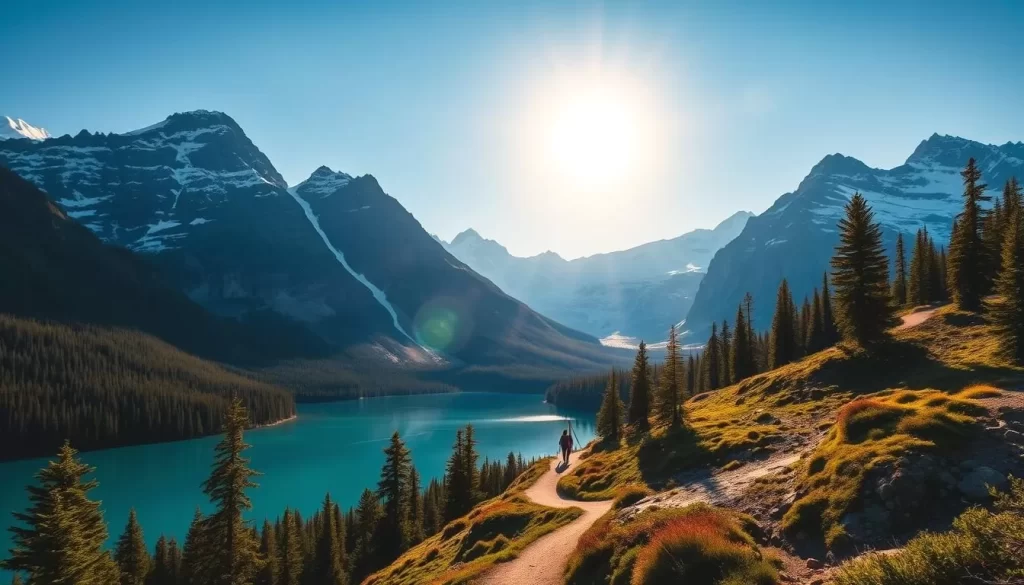
Redwood National Park: Among the World’s Tallest Trees
Redwood National Park in California is home to some of the world’s tallest trees, including the Hyperion, a coast redwood that stands at 379.7 feet. The park protects nearly half of all remaining old-growth redwood forests, offering a glimpse into a primordial landscape.
You can explore the park’s many trails, such as the Lady Bird Johnson Grove, which provides an accessible introduction to the redwood ecosystem. The park’s diverse landscapes also include wild beaches and coastal prairies, where you might spot Roosevelt elk. The misty morning fog creates mystical conditions for photography, making it a photographer’s paradise.
Planning Your National Park Adventure
To make the most of your visit to a national park, planning is key. A well-planned trip ensures that you have a memorable experience.
Permits and Reservations: What You Need to Know
Before you head out on your national park adventure, it’s crucial to understand the permit and reservation system. Some parks require permits for certain activities, such as hiking or camping. You can obtain information about permits and reservations through the park’s website or by contacting the park directly.
Make sure to plan ahead, as some permits and reservations may fill up quickly, especially during peak season.
Essential Gear for National Park Visits
Having the right gear is essential for a successful national park visit. Here are some of the essentials you should consider bringing:
- Quality hiking boots or shoes appropriate for your planned activities.
- A daypack with the “Ten Essentials”: navigation tools, sun protection, insulation, illumination, first-aid supplies, fire starter, repair kit/tools, food, water, and emergency shelter.
- Layered clothing for rapidly changing weather conditions.
- Water bottles or hydration system with capacity for at least 2-3 liters per person per day.
- Sun protection including broad-spectrum sunscreen, sunglasses, and a wide-brimmed hat.
- Navigation tools including physical maps, compass, and GPS device or downloaded offline maps.
- Camera equipment to capture memories.
- Binoculars for wildlife viewing and appreciating distant landscape features.
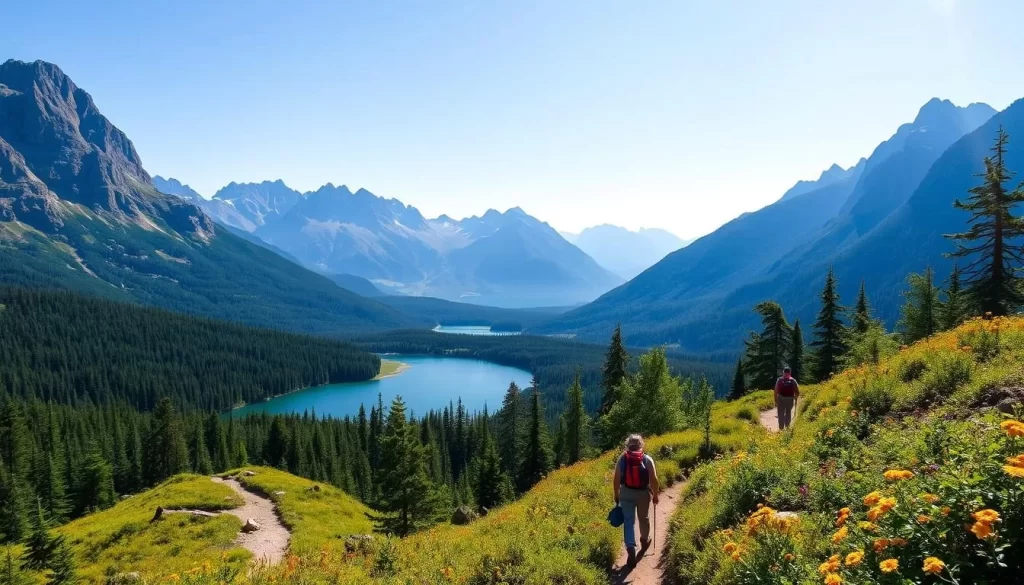
Best Times to Visit Popular National Parks
To maximize your national park experience, consider the timing of your visit carefully. Thetime of yearyou choose to visit can significantly impact your trip, with factors like crowd size, weather, and accessibility playing crucial roles.
Summer vs. Shoulder Season Benefits
Summer is the peak season for visiting national parks, with warm weather and long days making it ideal for outdoor activities. However, this also means larger crowds and longer wait times at popular attractions. For example, August is a busy month at Grand Teton National Park, although the crowds are slightly lower than in July. On the other hand, visiting during the shoulder season (spring or fall) can offer a more serene experience with fewer people. The shoulder season often provides pleasant weather and fewer crowds, making it an attractive option for those who prefer a more relaxed experience.
Avoiding Crowds While Maximizing Experiences
To minimize encounters with large crowds, consider the following strategies:
– Visit popular viewpoints and attractions at sunrise or near sunset.
– Plan your park visits for weekdays rather than weekends.
– Enter parks early in the morning to avoid entrance station lines.
Here is a comparison of strategies to avoid crowds:
| Strategy | Description | Effectiveness |
|---|---|---|
| Visiting at Sunrise or Sunset | Reduce crowds by visiting during less busy hours | High |
| Weekday Visits | Avoid weekend crowds by visiting on weekdays | High |
| Early Morning Entry | Beat the crowds by entering the park early | High |
Preserving Our National Parks for Future Generations
With the privilege of visiting national parks comes the responsibility to preserve them for the people who will visit in the future. As you reflect on your experiences in these incredible places, you’re reminded that it is a privilege to be in each of these parks—to discover the beauty in each of them that has existed long before you and will thrive long after you’re gone.
The national parks face significant challenges, including the impacts of climate change, which affects parks in various ways. For instance, Glacier National Park is experiencing melting glaciers, the Everglades is dealing with rising sea levels, and many western parks are at an increased risk of wildfires. The visitor impact is another challenge, with record visitation numbers straining infrastructure, damaging resources, and diminishing the visitor experience.
So, what can you do to help? Start by following the Leave No Trace principles: plan ahead, stay on designated trails, pack out all trash, leave natural objects undisturbed, respect wildlife, and be considerate of other visitors. You can also support park conservation organizations like the National Park Foundation or park-specific friends groups, which fund vital projects and advocacy efforts.
Additionally, consider volunteering through programs like the Volunteers-In-Parks (VIP) program, which allows you to contribute directly to park preservation. Practicing responsible social media sharing by avoiding geotagging sensitive locations and not promoting off-trail exploration can also help protect fragile resources. Educating yourself and others about park history, ecology, and challenges creates a more informed constituency advocating for park protection and adequate funding.
Lastly, consider the impact of your travel to the national parks. Choosing carbon-neutral travel options and offsetting your travel emissions can help reduce your contribution to climate change impacts affecting the parks. By taking these steps, you can help ensure that the national parks continue to thrive for generations to come.
As you look to the future, it’s clear that the actions you take today will make a difference in the preservation of our national parks. The country and the world will benefit from your efforts to protect these natural and cultural treasures.
The above is subject to change.
Check back often to TRAVEL.COM for the latest travel tips and deals.
